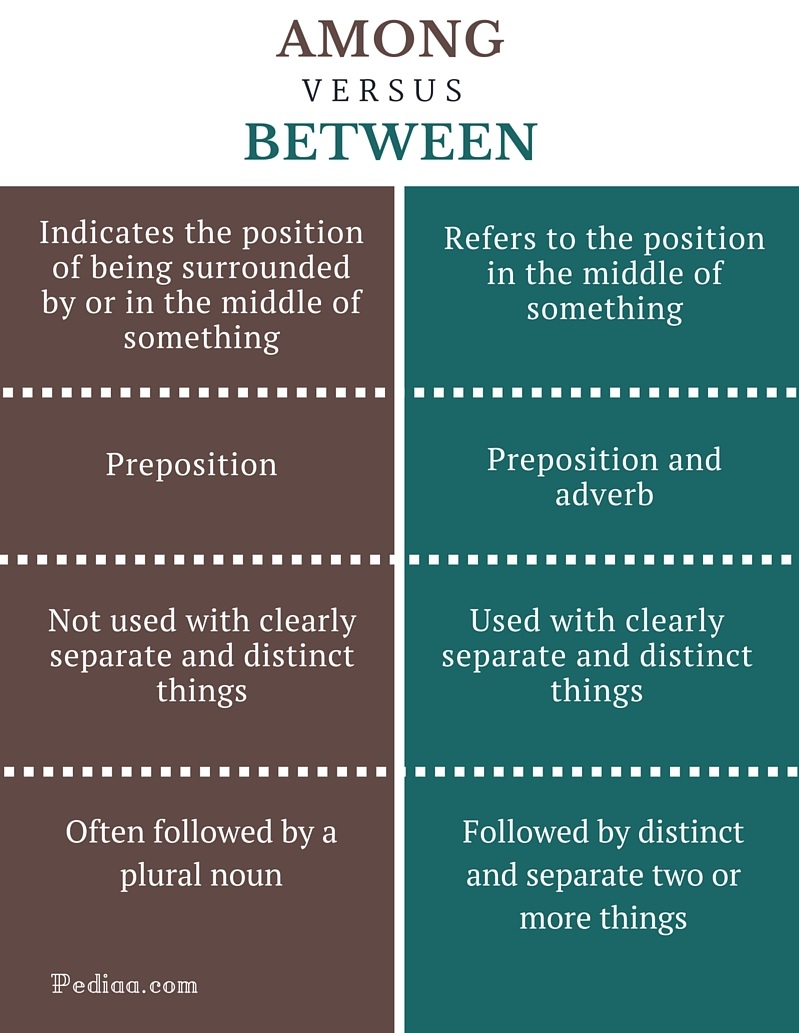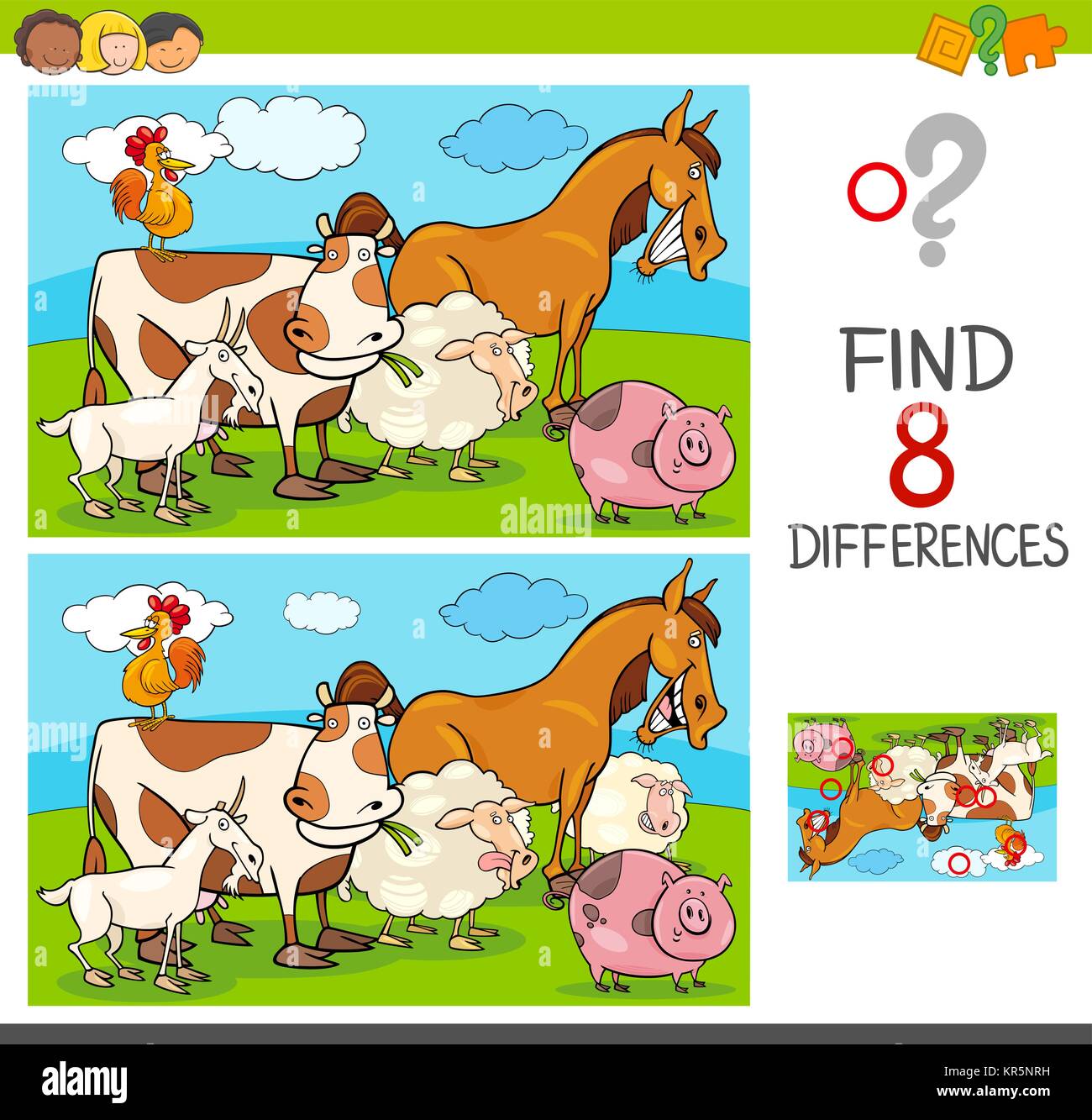What's The Difference: A Comprehensive Guide To Distinguishing Similarities And Differences
What Is The Difference Between is a phrase used to identify and compare the distinct qualities, characteristics, or features of two or more subjects. For instance, "What is the difference between a cat and a dog?" seeks to understand their dissimilarities in behavior, appearance, and care requirements.
Understanding differences is crucial for making informed decisions, resolving conflicts, and broadening perspectives. Historically, comparative analysis played a pivotal role in scientific discoveries and technological advancements, as it allowed researchers to isolate variables and establish relationships between different phenomena.
This article will delve into the key differences between various concepts, theories, products, and experiences, providing valuable insights into their unique attributes and applications.
Read also:Lucia Leenda Nude Unveiling The Truth Behind The Viral Sensation
What Is The Difference Between
Identifying the key aspects of "What Is The Difference Between" is crucial to understanding its significance and applications. These aspects encompass:
- Comparison
- Contrast
- Analysis
- Evaluation
- Distinction
- Discrimination
- Discernment
- Understanding
- Knowledge
By exploring these aspects, we gain a deeper understanding of the similarities and differences between various concepts, products, theories, and experiences. This knowledge empowers us to make informed decisions, resolve conflicts, and broaden our perspectives.
Comparison
Comparison is the act of examining two or more subjects to identify their similarities and differences. It is a fundamental component of "What Is The Difference Between" as it provides the basis for understanding the distinct qualities and characteristics of each subject.
Without comparison, it would be impossible to determine the differences between two or more entities. For instance, comparing a cat to a dog allows us to understand their unique physical attributes, behaviors, and care requirements. This comparison helps us make informed decisions about which pet is best suited for our lifestyle and preferences.
In the context of "What Is The Difference Between", comparison plays a crucial role in various fields, including science, technology, business, and everyday life. By comparing different theories, products, or experiences, we can evaluate their strengths and weaknesses, make informed decisions, and broaden our understanding of the world around us.
Contrast
Contrast is the act of comparing two or more subjects to highlight their differences. It is an essential component of "What Is The Difference Between" as it allows us to emphasize the unique qualities and characteristics of each subject.
Read also:Bhad Bhabie Leaked Nude The Truth Behind The Viral Sensation
Contrast plays a crucial role in understanding the differences between two or more entities. For instance, contrasting a cat to a dog allows us to highlight their distinct physical attributes, behaviors, and care requirements. This contrast helps us understand the key differences between these two animals and make informed decisions about which pet is best suited for our lifestyle and preferences.
In the context of "What Is The Difference Between", contrast is used in various fields, including science, technology, business, and everyday life. By contrasting different theories, products, or experiences, we can identify their strengths and weaknesses, evaluate their effectiveness, and make informed decisions. Contrast is a critical component of critical thinking and problem-solving as it allows us to identify the key differences between different options and make informed choices.
Analysis
Analysis is the process of breaking down a complex subject into smaller components to understand its structure, function, and relationships. It is a critical component of "What Is The Difference Between" as it allows us to identify and examine the key features, qualities, and characteristics of two or more subjects.
Without analysis, it would be difficult to determine the differences between two or more entities. For instance, analyzing a cat and a dog would allow us to identify their unique physical attributes, behaviors, and care requirements. This analysis helps us understand the key differences between these two animals and make informed decisions about which pet is best suited for our lifestyle and preferences.
In the context of "What Is The Difference Between", analysis plays a crucial role in various fields, including science, technology, business, and everyday life. By analyzing different theories, products, or experiences, we can evaluate their strengths and weaknesses, make informed decisions, and broaden our understanding of the world around us. Analysis is a critical component of critical thinking and problem-solving as it allows us to identify the key differences between different options and make informed choices.
Evaluation
Evaluation is the process of assessing the value, significance, or quality of something. It is a critical component of "What Is The Difference Between" as it allows us to determine the relative merits and drawbacks of two or more subjects. Without evaluation, it would be difficult to make informed decisions about which subject is better suited for a particular purpose or application.
For instance, when comparing two different programming languages for a software development project, evaluation would involve assessing their features, performance, documentation, and community support. This evaluation would help determine which language is better suited for the specific requirements of the project. Similarly, when comparing two different investment opportunities, evaluation would involve assessing their potential returns, risks, and tax implications. This evaluation would help determine which investment is more likely to meet the investor's financial goals.
The practical applications of evaluation within "What Is The Difference Between" are vast. It can be used to compare products, services, ideas, theories, and experiences. By conducting thorough evaluations, we can make informed decisions, identify areas for improvement, and gain a deeper understanding of the world around us. Evaluation is a critical component of critical thinking and problem-solving as it allows us to weigh the pros and cons of different options and make informed choices.
Distinction
Within the context of "What Is The Difference Between", distinction plays a crucial role in identifying and articulating the unique characteristics and qualities that set two or more subjects apart. Distinction allows us to pinpoint the specific attributes that differentiate one subject from another, enabling us to make informed comparisons and evaluations.
For instance, when comparing the programming languages Python and Java, we might distinguish Python's simplicity and ease of learning from Java's robustness and performance. This distinction highlights the key differences between the two languages and helps developers make informed decisions based on their specific project requirements.
The practical applications of distinction within "What Is The Difference Between" are vast. It allows us to compare products, services, ideas, theories, and experiences. By identifying and articulating the key distinctions between different options, we can make informed choices, identify areas for improvement, and gain a deeper understanding of the world around us. Distinction is a critical component of critical thinking and problem-solving as it allows us to identify the unique characteristics of different options and make informed choices.
Discrimination
Discrimination, a pervasive issue in society, bears a significant connection to the concept of "What Is The Difference Between". Discrimination involves treating individuals differently based on their membership in a particular category, resulting in unfair or biased treatment. Within the context of "What Is The Difference Between", discrimination can arise when comparisons are made between different groups or entities.
Discrimination can both cause and be caused by "What Is The Difference Between". Discrimination can stem from perceived differences between groups, leading to unequal treatment and the perpetuation of stereotypes. Conversely, "What Is The Difference Between" can be used to identify and challenge discriminatory practices by highlighting the unique attributes and qualities of different groups, promoting understanding and equality.
Real-life examples abound where discrimination manifests within "What Is The Difference Between". For instance, in the realm of hiring practices, discrimination based on race, gender, or age can lead to unfair comparisons and biased outcomes. Similarly, in educational settings, students from disadvantaged backgrounds may face discrimination in access to resources and opportunities, hindering their academic progress.
Understanding the connection between discrimination and "What Is The Difference Between" has practical applications in various fields. By recognizing and addressing discrimination, organizations and institutions can foster inclusive and equitable environments. "What Is The Difference Between" can be utilized as a tool to promote diversity and challenge discriminatory practices, ultimately leading to a fairer and more just society.
Discernment
Discernment holds a pivotal role within the realm of "What Is The Difference Between", as it encompasses the ability to distinguish between different subjects and comprehend their unique attributes. It involves careful examination, analysis, and judgment, allowing us to draw meaningful comparisons and make well-informed decisions.
- Cognitive Processing
This facet of discernment entails the cognitive processes involved in understanding differences. It encompasses the ability to perceive and interpret information, compare and contrast different aspects, and draw logical conclusions.
- Critical Thinking
Discernment heavily relies on critical thinking skills, which allow us to evaluate information, identify biases, and make sound judgments. It involves examining evidence, questioning assumptions, and reaching well-reasoned conclusions.
- Experience and Knowledge
Our experiences and knowledge base significantly influence our ability to discern differences. Exposure to diverse perspectives, cultures, and ideas enhances our understanding of similarities and differences, enabling more nuanced comparisons.
- Cultural and Contextual Factors
Discernment is shaped by cultural and contextual factors, which can influence how we perceive and interpret differences. Social norms, values, and beliefs impact our understanding of what constitutes meaningful distinctions.
Through the lens of discernment, "What Is The Difference Between" becomes a powerful tool for fostering deeper understanding, promoting critical thinking, and making informed choices. It allows us to move beyond superficial comparisons and delve into the intricacies of different subjects, leading to a more nuanced and comprehensive understanding of the world around us.
Understanding
Within the realm of "What Is The Difference Between", understanding plays a pivotal role as a foundational component and a driving force. Understanding encompasses the cognitive processes involved in comprehending the distinctions between different subjects, grasping their unique attributes, and discerning their relationships. It serves as the bedrock upon which meaningful comparisons can be made and informed judgments reached.
As a critical component of "What Is The Difference Between", understanding manifests in several ways. Firstly, it enables the identification of relevant attributes and characteristics that differentiate one subject from another. By delving into the intricacies of each subject, we gain a deeper comprehension of their defining features, allowing for more precise and insightful comparisons.
Real-life examples abound where understanding is instrumental within "What Is The Difference Between". In the field of medicine, understanding the distinct symptoms and causes of different diseases is crucial for accurate diagnosis and effective treatment. Similarly, in the realm of law, understanding the nuances of various legal doctrines and their applicability to specific cases is essential for sound legal reasoning and just outcomes.
The practical applications of understanding within "What Is The Difference Between" are far-reaching. It empowers us to make informed decisions, resolve conflicts, and navigate complex situations with greater clarity and confidence. By fostering a deeper understanding of the distinctions between different options, ideas, or perspectives, we can make choices that are aligned with our values, goals, and aspirations.
Knowledge
Within the realm of "What Is The Difference Between", knowledge serves as a cornerstone, illuminating our understanding of distinctions and enabling us to make informed judgments. It encompasses a vast array of information, experiences, and insights that shape our perceptions and guide our reasoning.
- Theoretical Knowledge
Theoretical knowledge refers to the organized body of concepts, principles, and theories that provide a framework for understanding the world. It involves the study of abstract ideas, models, and systems, and forms the foundation for scientific inquiry and technological advancements.
- Experiential Knowledge
Experiential knowledge is acquired through direct involvement and hands-on experiences. It encompasses practical skills, techniques, and know-how, and often involves learning by doing. This type of knowledge is crucial in fields such as engineering, medicine, and the arts.
- Contextual Knowledge
Contextual knowledge refers to the understanding of specific situations, events, or phenomena within their broader context. It involves recognizing the interplay of factors, influences, and relationships that shape outcomes and decisions. This type of knowledge is essential in fields such as history, sociology, and anthropology.
- Applied Knowledge
Applied knowledge is the practical application of theoretical and experiential knowledge to address real-world problems and challenges. It involves using knowledge to develop solutions, design interventions, and make informed decisions. This type of knowledge is crucial in fields such as business, education, and healthcare.
These facets of knowledge are interconnected and interdependent, contributing to our overall understanding of "What Is The Difference Between". They provide the foundation for identifying similarities and differences, evaluating options, and making informed judgments. By leveraging our knowledge, we gain a deeper comprehension of the world around us and are better equipped to navigate its complexities.
Throughout this exploration of "What Is The Difference Between", we have delved into its multifaceted nature, uncovering key ideas and findings that illuminate the intricacies of distinguishing between different subjects. Central to this understanding is the concept of comparison, which forms the for identifying similarities and differences, allowing us to make informed judgments.
Furthermore, we have examined the role of analysis, evaluation, and distinction in refining our understanding of differences. By breaking down complex subjects, assessing their merits, and pinpointing unique characteristics, we gain a deeper comprehension of the nuances that set them apart. This process empowers us to make well-reasoned choices, resolve conflicts, and navigate the complexities of the world around us.
The significance of "What Is The Difference Between" extends beyond mere intellectual exercise; it is a tool for fostering critical thinking, promoting understanding, and driving progress. By embracing the principles outlined in this article, we equip ourselves to engage in meaningful comparisons, make informed decisions, and contribute to a more enlightened and just society.



